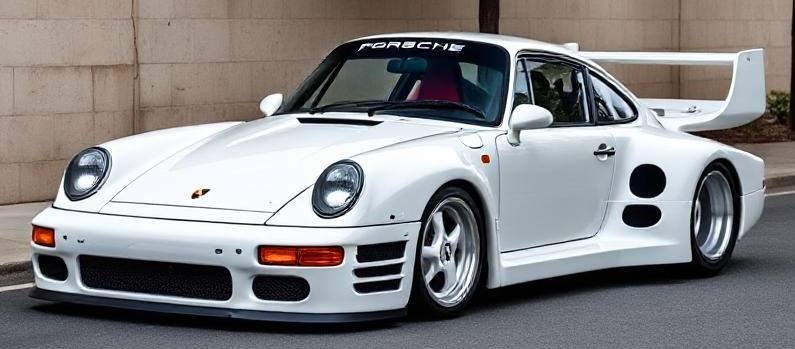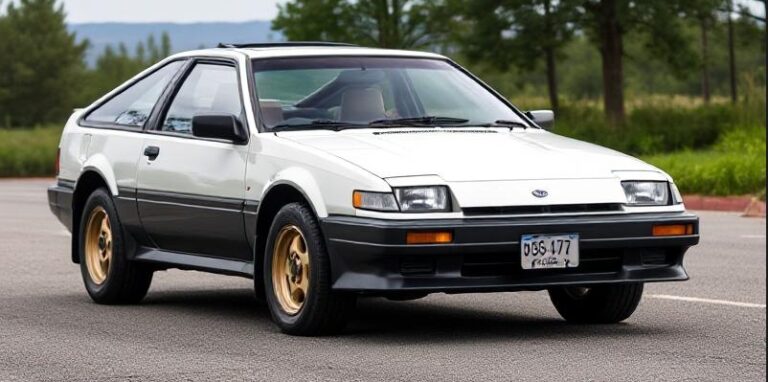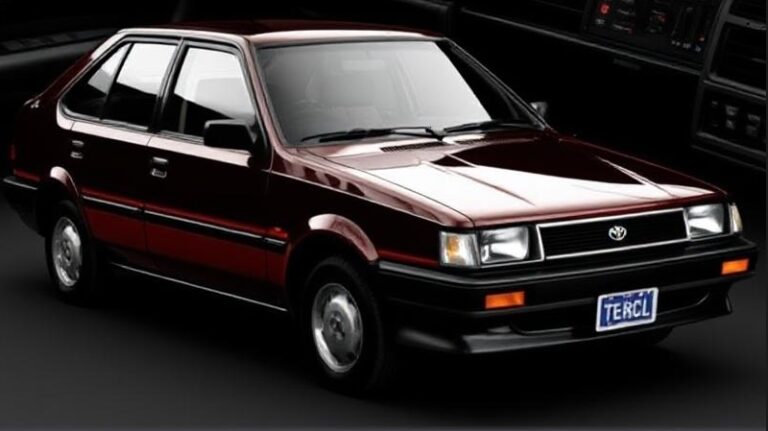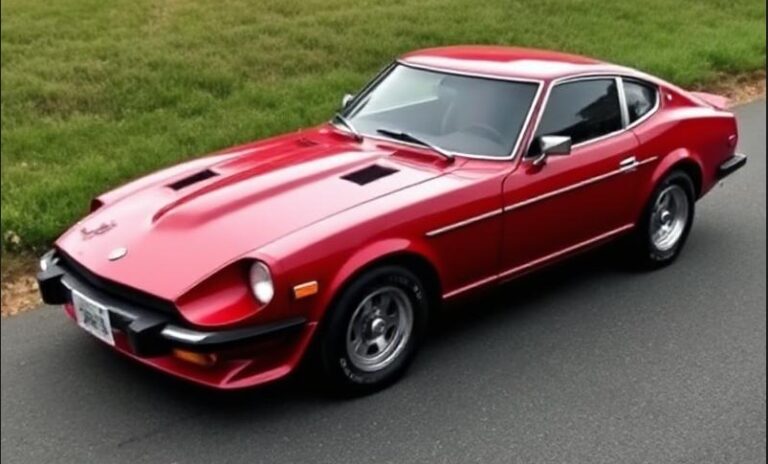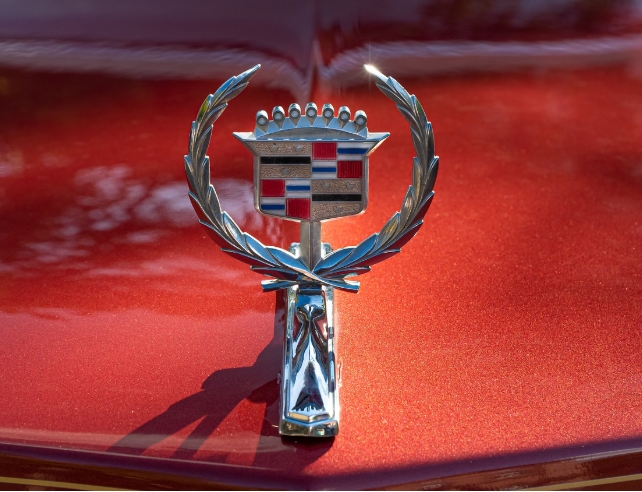The Evolution of the Porsche 959: A Pinnacle of Engineering
The Porsche 959, produced from 1986 to 1989, is regarded as one of the most groundbreaking sports cars of its time. This vehicle not only embodies Porsche’s racing heritage but also showcases the company’s commitment to innovation and technology. Drawing from its ancestry in motorsport, the 959 represents the perfect fusion of performance, luxury, and advanced engineering.
Origins: The Birth of the 959
The Porsche 959 was conceived against the backdrop of Group B rallying, a fiercely competitive motorsport division that exemplified cutting-edge performance cars of the 1980s. As Porsche sought to return to the world of rallying, they faced the task of developing a vehicle that could meet the regulations imposed by the FIA, which promoted the use of production vehicles for competition.
The initial prototype of the Porsche 959, known as the “Type 961,” took shape in the early 1980s. With a focus on all-wheel drive (AWD) technology, the 961 aimed to revolutionize both road and rally performance. In 1985, Porsche officially unveiled the 959 at the Frankfurt Auto Show, garnering immediate excitement and speculation around its technological innovations.
959 Production Years and Model Overview
The Porsche 959 went into production in 1986, with the production run continuing until 1989. During this brief period, the company produced a limited number of units due to the stringent requirements of the Paris-Dakar rally and the advanced technology implemented in the vehicle.
Key Models and Trim Levels:
- Porsche 959 Komfort (1986-1989):
- Overview: The standard model of the 959 was known as the Komfort. This version was designed for road use, showcasing a blend of luxury and high-performance characteristics.
- Specifications: The Komfort featured a twin-turbocharged 2.85-liter flat-six engine, generating 450 horsepower and 368 lb-ft of torque. Paired with a six-speed manual transmission, it could accelerate from 0 to 60 mph in just 3.6 seconds, with a top speed of around 197 mph.
- Features: Leather interiors, digital displays, air conditioning, and a sophisticated AWD system that could distribute power between the front and rear wheels based on conditions were all included.
- Porsche 959 Sport (1989):
- Overview: The Sport variant represented a more performance-oriented version of the Komfort, equipped with additional improvements aimed at enthusiasts seeking an edge on the racetrack.
- Specifications: While retaining the same engine, the Sport variant was lighter, shedding weight through the omission of certain luxury features. This resulted in improved handling and acceleration.
- Racing Pedigree: The Sport model adopted a more aggressive suspension setup and larger tires, enhancing stability at speed.
- Porsche 959 Paris-Dakar (1985):
- Overview: Even before the Komfort and Sport were finalized, a series of 959s was engineered to compete in the grueling Paris-Dakar rally. Known as the 959 Paris-Dakar, these vehicles were rugged and tailored for off-road conditions.
- Specifications: Like the road versions, these vehicles utilized the same drivetrain, but they were equipped with reinforced chassis and specialized suspension systems to handle rough terrains.
- Achievements: The racing variant of the 959 proved its mettle by winning the Paris-Dakar rally in 1986, securing a significant legacy in motorsport history for the model.
Technological Innovations
The Porsche 959 was a technological marvel that set benchmarks for future sports cars. Here are some of its standout technological features:
- All-Wheel Drive System: One of the first high-performance vehicles to adopt an all-wheel-drive system, the 959’s system could dynamically shift power between the front and rear wheels. This was a pioneering move that enhanced traction and stability.
- Aerodynamics: The 959 embraced the importance of aerodynamics with a sleek design that reduced drag, improving top speed and fuel efficiency. The body was made from lightweight materials, contributing to overall performance.
- Adaptive Suspension: The 959 was fitted with an innovative active suspension system that could adapt based on driving conditions, allowing for improved comfort and handling.
- Advanced Electronics: This model was also equipped with high-tech electronics for its time, including an elaborate onboard computer for diagnostics and a sophisticated fuel injection system that optimized performance.
.
When the LEO’s need to keep up with the pursuit of those fast cars, what do they need?
Dodge Challenger Police Cars !!!
.
Legacy and Aftermath
Despite its relatively short production span, the Porsche 959 has left an indelible mark on the automotive landscape. With only 337 units produced, it remains a collector’s item, cherished for its engineering prowess and exclusivity. Its influence can be seen in subsequent models, including the Porsche 911 Turbo, which adopted many of the technological advancements pioneered by the 959.
By the early 1990s, the 959 had paved the way for future advancements in Porsche technology. The company embraced lessons learned during the 959’s development to enhance the performance of their future vehicles, leading to innovations in turbocharging, AWD systems, and vehicle dynamics.
Conclusion
The Porsche 959 represents an exciting chapter in the history of automotive innovation, showcasing Porsche’s commitment to performance, engineering, and the thrill of driving. From its creation inspired by motorsport to its limited yet impactful production run, the 959 is admired not only for its performance capabilities but also for its exceptional engineering.
As a result, the Porsche 959 stands as a bridge between past and present, influencing generations of drivers and engineers alike. It reminds us that the pursuit of automotive excellence knows no bounds, inspiring ongoing innovation that continues to define the Porsche brand. Today, the 959 remains an iconic symbol of what is possible when technical prowess meets the passion for driving, forever etched in the annals of automotive history.
